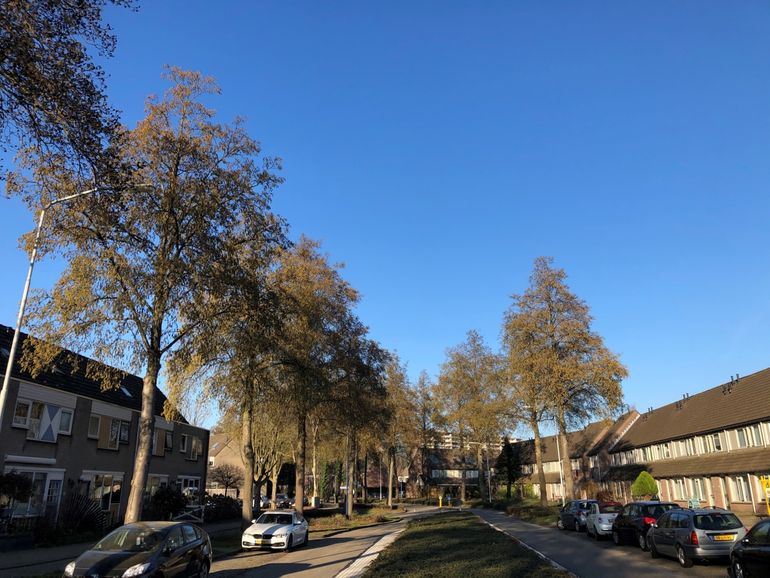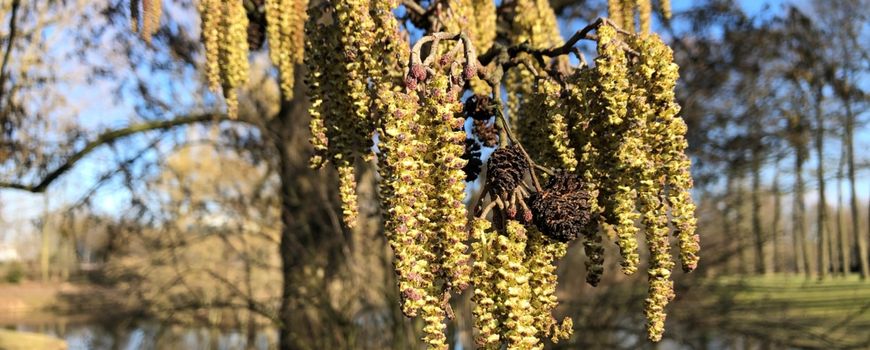It was already known that exposure to pollen in the spring reduces the immune system against viral infections in the respiratory tract. This is the case, for example, with the cold virus. This effect occurs both in people who are allergic to pollen and in people who are not allergic. During the outbreak of the coronavirus, it was noticeable that in several countries the acceleration in the increase in the number of infections only started when the pollen concentration increased. As a result, researchers suspected that the coronavirus could also benefit from a weakened immune system due to pollen exposure.
Worldwide: more pollen, more infections
To find out, a team of 150 scientists examined pollen counts from 130 pollen counting stations in 31 countries, including the Netherlands. The article ‘Higher airborne pollen concentrations correlated with increased SARS-CoV-2 infection rates, as evidenced from 31 countries across the globe‘was published online March 9 in the journal PNAS. The pollen effect was visible all over the world at the start of the epidemic. The study shows that contamination rates increased after an increase in pollen concentration four days earlier. The contamination figures increased by an average of four percent when the pollen concentration increases by one hundred pollen per cubic meter. After the introduction of a lockdown, this effect halved, but the reinforcing influence of pollen was still visible.
In the Netherlands too?
Polls counts of the LUMC and the Elkerliek hospital are included in the study. This reinforcing effect was also visible in the Netherlands, but this has weakened after strict statistical testing. Several rigorous statistical tests were used to investigate whether there was a link between pollen and COVID-19. A challenging analysis because it involves a large amount of information and many different factors determine the degree of infection of the corona virus. In addition, data collection for this study stopped after April 8, as a result of which a large part of the spring pollen peak in the Netherlands was not included in the analysis. Partly because of this, the relationship between pollen and COVID-19 could not be clearly demonstrated in the Netherlands.

Pollen and the virus
The fact that the infection rates only increase after an increased pollen exposure four days earlier can be explained by the fact that it takes a few days for the virus to manifest itself and people to get tested. This is in line with previous studies showing a four to five day incubation period for the coronavirus. The researchers emphasize that the positive correlation between pollen and COVID-19 is not attributed to a better spread of the virus through pollen, but to a weakened resistance by the pollen. After all, the spread of the virus is caused by contact between people.
Follow-up research needed
Thus, the article suggests that pollen exposure is contributing to the increase in corona infection rates in many countries. Whether this also applies to the Dutch situation will have to be further investigated. It must also be investigated whether the relationship found is causal. International studies are underway in which cells from the lung are exposed to pollen and the coronavirus SARS-CoV-2. Studies like this make it much easier to determine whether exposure to pollen actually weakens the body’s defense mechanism against the virus.
Pollen situation in the Netherlands
 After the short frost period, the alder pollen concentration in the Netherlands increased rapidly from 18 February. On Tuesday 23 and Wednesday 24 February, the LUMC and the Elkerliek hospital registered a very high peak of around 1,400 pollen per cubic meter of air, after which the concentration decreased rapidly again. In addition to alder pollen, the concentration of pollen from the cypress family / yew and poplar also rose remarkably high. That concentration also dropped again after a few days. Whether the appearance of pollen in the air contributed to the resurgence of corona infections around that time remains to be explored. After a somewhat cooler period, the temperature will rise again in the coming week, but the probability of precipitation will also increase. When it rains, pollen washes out of the air. In addition to the persistent flowering of alder, several trees gradually blossom during the course of March. Especially pollen concentrations of birch, ash and poplar can rise relatively high. The final concentration will depend on a combination of factors and is currently difficult to predict. Publish it every week LUMC on Tuesday and the Elkerliek hospital on Wednesday the pollen counts of the previous week.
After the short frost period, the alder pollen concentration in the Netherlands increased rapidly from 18 February. On Tuesday 23 and Wednesday 24 February, the LUMC and the Elkerliek hospital registered a very high peak of around 1,400 pollen per cubic meter of air, after which the concentration decreased rapidly again. In addition to alder pollen, the concentration of pollen from the cypress family / yew and poplar also rose remarkably high. That concentration also dropped again after a few days. Whether the appearance of pollen in the air contributed to the resurgence of corona infections around that time remains to be explored. After a somewhat cooler period, the temperature will rise again in the coming week, but the probability of precipitation will also increase. When it rains, pollen washes out of the air. In addition to the persistent flowering of alder, several trees gradually blossom during the course of March. Especially pollen concentrations of birch, ash and poplar can rise relatively high. The final concentration will depend on a combination of factors and is currently difficult to predict. Publish it every week LUMC on Tuesday and the Elkerliek hospital on Wednesday the pollen counts of the previous week.

Testing for complaints
The complaints of hay fever can be confused with the complaints of COVID-19. Most of the time, hay fever does not cause a fever or a loss of smell; these are symptoms of COVID-19. The government’s advice ‘if you think about testing, get tested’ also applies now.
More information
Text: Arnold van Vliet, Wageningen university; Letty de Weger, Leiden University Medical Center; Mieke Koenders, Elkerliek Hospital
Photos: Arnold van Vliet
– .


